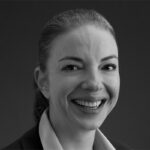With offices in Zurich and Geneva, our Swiss teams offer US-connected individuals living or US -connected businesses based in Switzerland and across Europe with expert US tax advisory and compliance services
USTAXFS SARL is part of the USTAXFS Group founded over 35 years ago in London. The Swiss offices were established in Zurich and Geneva over 15 years ago. Our dedicated local teams in Switzerland bring an in-depth knowledge of local regulations and international tax to US-connected individuals for all client engagements.
Our Swiss team specialize in all aspects of US tax advisory and compliance services for individuals, trusts and corporate entities, including Investment Funds.
We are expats ourselves, living and working in Switzerland. We are multilingual, with a deep understanding of local documents, regulations and cantonal systems, as well as how to navigate international tax.
Our Advisory Services
- Trust characterization from a US tax perspective
- Wealth transfer pricing, timing and form of distributions to beneficiaries
- Foreign trust UNI, DNI, and PTI
- US business entity classification, US reporting requirements, and foreign investment into the US
- Treaty analysis
- Pre-move advisory services (both inbound (to US) and outbound (leaving US)
Our Compliance Services
Under the US tax system, US persons are required to file annual US income tax returns and various additional informational reports as applicable such as FBARs (FinCEN From 114). Non-US persons must also comply with the US tax rules if they have investments in the United States, income or gains from the US, or own US entities through a non-US structure.
Failure to file the returns and reports in a timely manner, or incorrectly, can result in substantial penalties.
US tax services for US-connected individuals living and US-connected businesses based in Switzerland, and wider Europe
Our USTAXFS team in Switzerland are experts in all aspects of US tax compliance and planning, for individuals and businesses, and are ready to support you if you are an American living in Switzerland or across Europe. Contact us to discuss how our Swiss team can help you.


